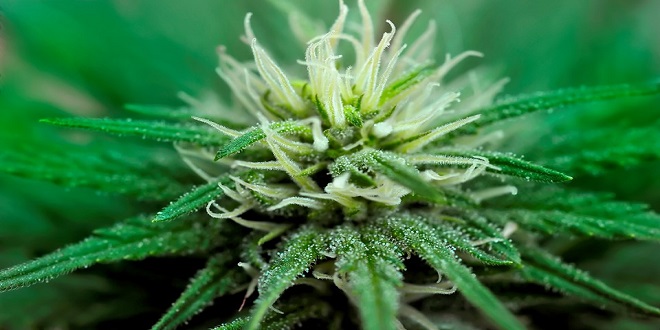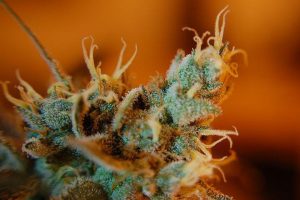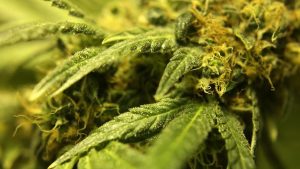Tips on How To Increase Trichome Production

Trichomes are mushroom-like structures covering the cannabis plant and contain cannabinoids and terpenes. These trichomes are responsible for the sticky sensation felt while handling cannabis buds and provide cannabis with its potent effects.
During the early stages of the flowering cycle, trichomes begin to develop, and the plant continues to create sticky resin. As the trichomes are loaded with cannabinoids and terpenes, they become increasingly hazy. How To Increase Trichome Production? You must feed your plant appropriately to ensure that it develops the most trichomes with the highest cannabinoid and terpene content.

There are a few things that can help you grow the production of trichomes effectively. Some of the beneficial tips include:
#1. Acknowledge Your Nutrients
Cannabis plants require 13 different minerals to flourish; however, nitrogen, phosphorus, and potassium contribute the most to plant growth. Each nutrient business has its recipe, sometimes given without explanation, making it difficult to know what to feed your plant – and what they can absorb.
Phosphorus and potassium values are frequently provided but not clarified as to what is available to roots, leading to estimates. This could be the result of exaggerated data or out-of-date labeling standards.
Always do your homework before buying to guarantee you’re getting the optimum nutrients for your plant. Look up the product and the brand online and ask other growers if they have any experience with it.
#2. Evaluate Water
Cannabis plants absorb a lot of water, so knowing what’s in your water is important because your plant will absorb it. Minerals abound in tap and well water, impacting pH levels and nutritional balance.
When positive-charged minerals like calcium, magnesium, and potassium are present in excess, they can inhibit the absorption of other nutrients. Testing your water will help you determine if any changes are required to achieve the desired results.
#3. Track Plant Maturity
The plant will require varied nutrients depending on its growth stage to promote optimal growth. Seedlings, for example, enjoy nitrogen because it encourages the growth of plant leaves, which increases the surface area available for light absorption, allowing the plant to make carbohydrates. Potassium is similarly crucial during this stage since it transports water into the growing stems and leaves.
#4. Identify The Product Label
Every nutrient company has its recipe, and they rarely explain why. There are 13 major nutrients that plants require to develop, but the three primary macronutrients are nitrogen (N), phosphorus (P), and potassium (K) (K). Let’s start with one of the most disturbing aspects of nutrient labels: The P and K numbers on the package do not correspond to what is available to roots.
These figures represent a theoretical amount of potassium oxide and phosphorus pentoxide and are inflated by outmoded labeling laws. It’ll give you a headache trying to figure out why they’re labeled that way, but you should know that roots only get around half of the P mentioned.
#5. Grow Trichomes not leaves and stems
Plants’ primary (vegetative growth) and secondary (cannabinoids and terpenes) metabolisms share energy resources, and your food supply determines which one takes precedence. Growth and SM accumulation rise exponentially as nitrogen concentration increases.
However, there comes the point where adding more N boosts growth while reducing SM accumulation until it stops entirely. To maintain photosynthesis, give a moderate amount of N and P to focus growth on trichomes.

#6. Prevent From Over-Fertilization
You don’t want to over-fertilize your plants, no matter how eager you are to get nutrients into them. Over-fertilization can reduce bud quality and trichome production by limiting the ability of your plant to absorb water.
Adding fertilizers to your plant during the second half of the flowering cycle will also diminish cannabinoid and terpene concentration, decreasing the flavor and potency of your buds.
#7. Select a Strong Strain
The genetics of your plant has a big impact on its ability to produce higher potency. Every strain has a maximal potency potential. The super-popular Girl Scout Cookies strain, for example, can achieve a staggering THC content of up to 28%, but that’s where it stops. Whatever strain you’re growing, you should be aware that potency content has a limit.
#8. Increase the intensity of the blue, white, and UVB lights
You can tell your plants how to grow, blossom, and create resin when you alter the light spectrum of your grow lights. This is why we strongly advise utilizing LED lighting. Rather than switching out an MH (blueish) bulb for an HPS (reddish) bulb, grow lights like these allow you to customize the spectrum.
You want to encourage your plant to grow more resin-producing trichomes during the flowering period to increase potency. You can achieve this by turning up the blue, white, and UVB lights to 100% and turning down the red to roughly 50%.
Why does it function like that?
Plants make trichomes to protect themselves. These tiny creatures employ trichomes and the resultant resin to protect themselves from the sun’s UV rays in the wild. The more trichomes you get and the higher chance you have of attaining full potency, the more you can duplicate that light in your growth space.
#9. Allow your plants to dry out a little
This next suggestion should be handled with care. Try it, but monitor your plants to ensure you don’t overdo it. Allow your plants to become thirsty. Not at all. It hasn’t faded. Take away a little dampness from their lives. If you can lower the humidity in your growing environment, you’ve made the right decision. Plants protect themselves from dry climates by creating more resin, similar to UVB rays. You’d never let them go thirsty. However, as long as they are unaware of this, their protective instincts will increase your potency.
Conclusion
Poor harvesting, cutting/drying, and trimming practices can reduce trichome production and bud quality. When it comes to trimming, expert hand trimmers with gloves or an automatic bud trimmer with a non-stick Quantanium coating, can help protect the trichomes to the ultimate product.
While there is no proven “secret formula” for creating the most trichomes, keeping these guidelines in mind can help to increase trichome productivity and improve bud quality.





